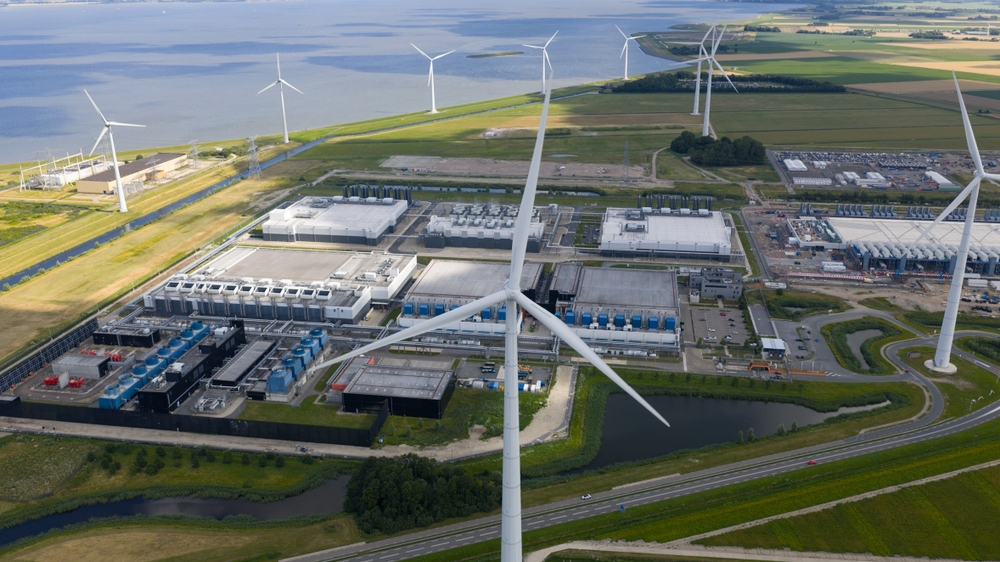Power & Data Centres – The Opportunity For Experts To Keep Up With Demand

A recent report by the International Energy Association (IEA) has outlined the “major consequences” it foresees for the energy sector from the data centre industry.
The detailed report looks at the sustainability of meeting demand required to power AI tools, the growth of which will soon account for around half of data centre operations.
Already we’re seeing the impact, with US energy utilities reporting receiving large requests for additional power beyond peak demand from data centre companies, or Ireland reporting that data centres account for 21% of the entire country’s electricity demand.
One review by Rystad Energy predicted over 100GW of demand is set to come online across American between now and 2035.
And the IEA predicts that by 2030 global Data Centres will require more energy than the current capacity of Japan.
The future energy requirements of Data Centres
The biggest data centres operate as mission critical resources for processing operations for businesses, hospitals, military facilities, governments and more. They are essential to so many processes that we rely on – so much so that the UK government recently designated them as “Critical National Infrastructure”.
But the biggest impact to this industry comes from the rise of AI, with generative-AI tools like ChatGPT requiring more data and therefore more energy to process. For context: it’s estimated that an average ChatGPT answer uses 10 times the energy to produce than a standard Google search.
To generate a six second video clip, generative AI tools require around eight times the energy required to charge a mobile phone.
With more and more people and businesses relying on AI tools for their everyday activities, they’ve become embedded into our daily lives. And this is only set to increase.
The IEA estimates that AI-optimized data centres are projected to quadruple by 2030.
Combined with the many other operations in play by data centres, the global data centre industry is set to drive more than 20% growth in electricity demand in the next five years, reaching 945 terawatt-hours (TWh).
To manage all this, mission critical facilities must look to sustainable solutions for generating power.
In countries like the UK the investment is going into grid-independent renewable energy integration and microgrids, with many new facilities looking to incorporate wind and solar power as part of their construction.
Meanwhile the Trump administration is looking at increasing the planned operation of coal and other fossil fuel plants beyond their planned retirement dates to manage the increased loads.
On a state-level, the move is to understand better how much load these facilities require and how that can impact the grid. In Georgia, the 2023 Integrated Resource Plan Update requires the state-run facilities to publicly disclose the size, review status, proposed service date and load ramp schedule of all commercial large load projects over 115 MW, allowing stakeholders and policymakers access to accurate data on energy demand.
Texas, are adopting electricity demand forecasting methods, that discount utility load projections with observed information in expected data center load in current operation.
Grid improvements will allow more flexibility using these solutions to manage the greater requirements of data centers. Some tech firms including Amazon and OpenAI are also pushing for zonal electricity pricing to lower costs in remote areas where they can build larger facilities.
But power adjustments can only go so far, with on-site renewable generation and battery storage systems being called the best solution to allow for semi-independent operation without relying too heavily on the grid.
Despite this, many solutions still aren’t enough, with Microsoft’s $3.2 billion UK Data Centre investments for multiple facilities, being called “at risk” in April due to grid delays, exacerbated by a backlog of renewable projects.
Major firms are looking beyond the grid, with Meta and Google both announcing their intentions to explore the use of nuclear energy, specifically with construction of small modular reactors, for their fleets of data centres in the USA; while the Canadian Nuclear Safety Commission (CNSC) in April approved a request from Ontario Power Generation for the first licence in the country to build an SMR.
True Expertise Delivered
The challenges of delivering sustainable energy to power mission critical data centre projects threaten many operations. But the need and demand for larger, more efficient data centres will outweigh any challenges as businesses push for smarter systems and self-sufficient power generation.
New projects must take sustainable power operation into account, which is where data centre construction experts become essential.
Coalesce Management Consulting covers a wide remit of expertise targeting the solutions to this rapidly expanding sector.
Our Mission Critical team specialise in supporting data centre construction projects with world-leading expert consultants who bring experience from optimising global projects.
Our Power Transmission & Distribution experts deliver essential grid upgrades, substation development and modernisation of networks.
And our Renewable Energy consultants are building new wind and solar generation projects across the USA.
We provide construction and engineering managers, project managers and renewable energy experts who can be deployed at any stage of a project, or can engage from start to finish, ensuring delivery of sustainable, efficient data centre projects.
Get in touch with our specialist teams to learn more about how we support data centre, power and energy projects across America – and partner with us today.